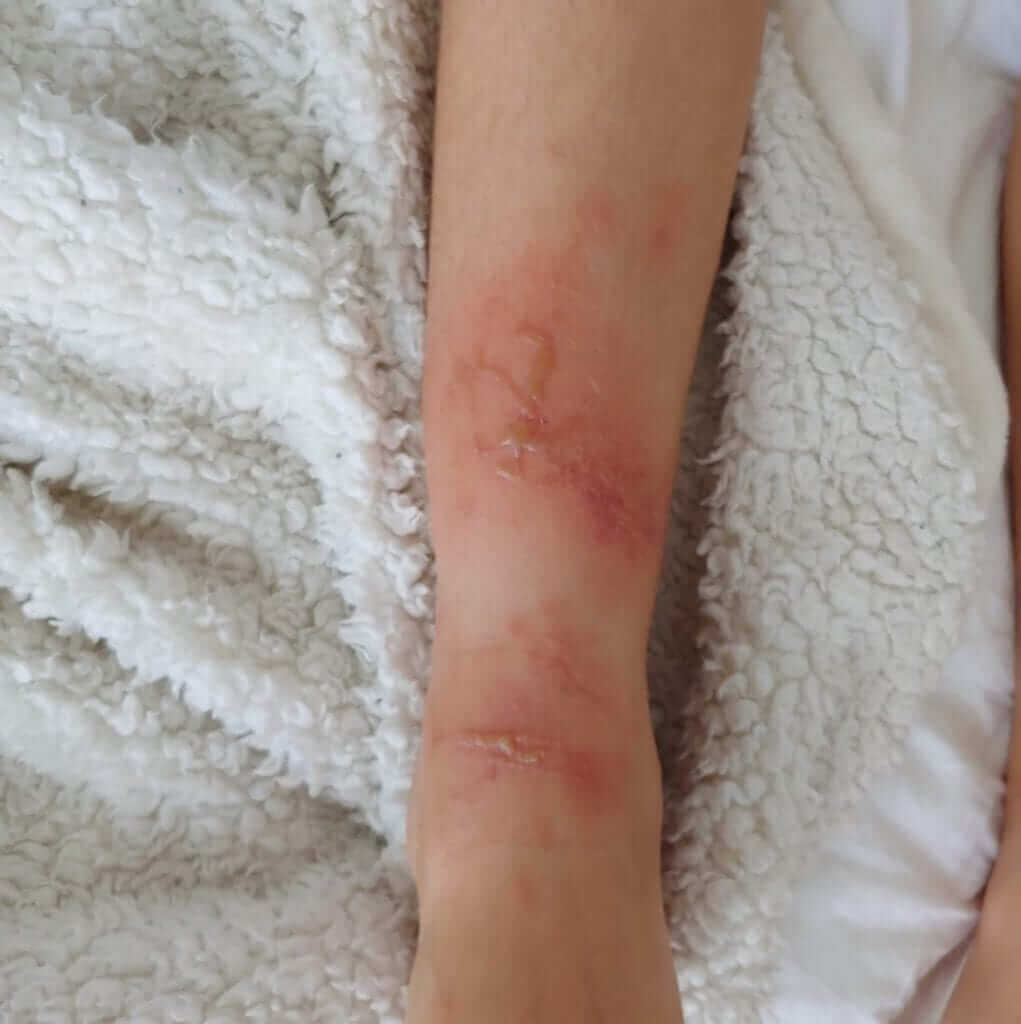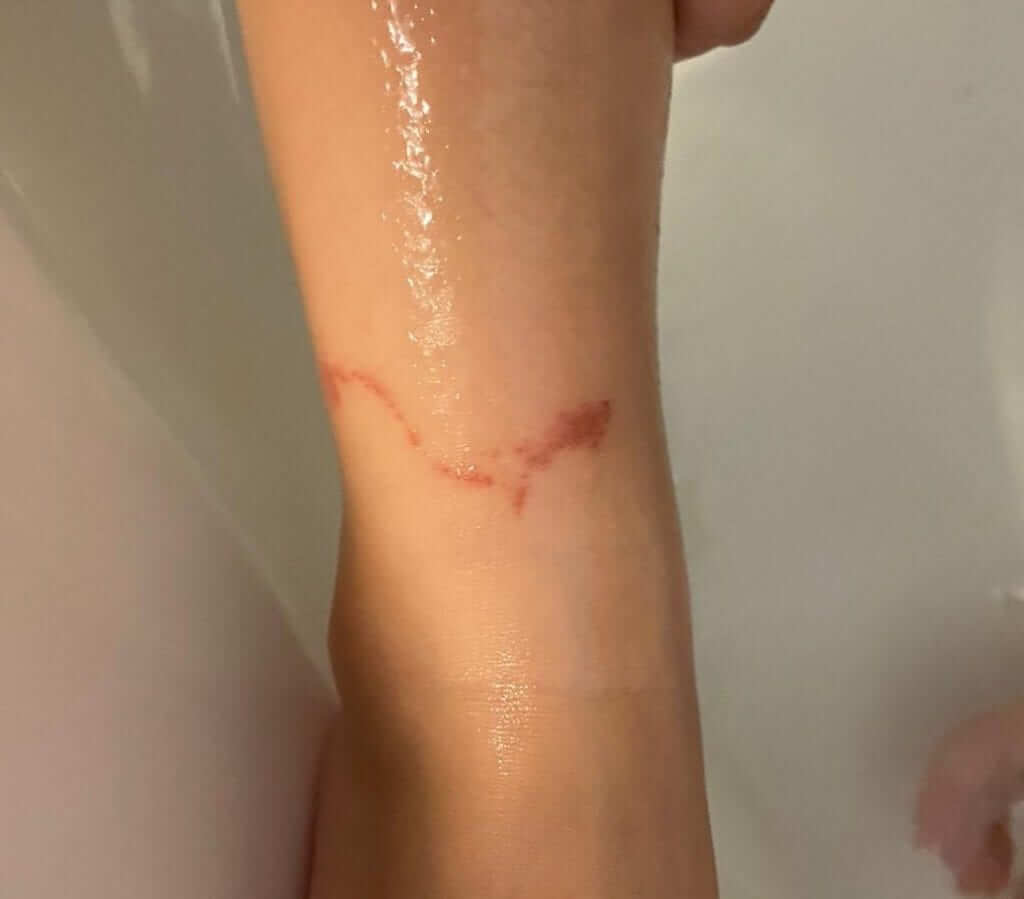
Jellyfish stings in children and adults
Jellyfish stings may vary in their severity depending on the type of jellyfish. In the following post I will be discussing common jellyfish stings, like those caused by the nomad jellyfish. The nomad jellyfish is commonly found in Mediterranean Sea, Indian Ocean and the Pacific Ocean, and it can cause some very unpleasant symptoms. But, in pediatrics we tend to look at the glass that is half full and we often remind ourselves that if we happen to be in a region where the nomad jellyfish is most commonly found then we are probably lucky – there are many jellyfish out there that are a lot more dangerous and some of their stings can even be fatal.
Jellyfish have “arms” that contain stinging cells, similar to a syringe, and their aim is to paralyze their prey. Since these cells can release their poison, or venom, a while after the jellyfish arms have disconnected from the jellyfish body, one can get stung even if they do not come in direct contact with the jellyfish.
What are the types of reaction after Jellyfish sting?
In children and adults, the sting is often characterized by a local reaction, and less often by a systemic reaction.
Local reaction: pain, burning sensation, itching and a skin wound that is usually linear (the shape of a whipping injury). The skin’s reaction can vary from redness to urticaria, wheals, blisters, pigmentation or even necrosis. See the attached photos.
The local pain can last for days to weeks and in severe cases it can also lead to scarring and a change in the skin colour in the area affected. We’ll learn more about how to prevent this from happening below.
Just like any skin lesion, the affected area can get infected or undergo, what we call, a secondary bacterial infection. This is also something we can learn to prevent as I will explain below.
Systemic symptoms: these can include fever, abdominal pain, fatigue and muscle pain. Uncommon reactions could also include a severe allergic reaction (anaphylaxis).

What do principles of treatment for jellyfish stings in children and adults include?
A. Getting rid of the venom.
B. Neutralizing the venom.
C. Supportive treatment including pain management.
And most importantly – handling everything gently and calmly. Stressing and yelling has never helped any kid recover from a jellyfish sting.
So what exactly needs to be done to treat jellyfish stings in children and adults?
Getting rid of the venom – mechanical removal with the help of a stick or a piece of plastic and afterwards, washing the affected area with running water. There is an ongoing debate in the medical literature about whether the water used for washing needs to be sweet or salty, and whether it should be cold or warm. In an article that summarized many different medical research papers it was concluded that the use of mildly warm water may be more helpful. But realistically speaking, there is no winning answer to this ongoing question and I personally don’t know anyone who carries around a bottle of warm water when they go to the beach. Therefore, I would just recommend washing with running water ASAP. Using salty sea water is perfectly fine.
Neutralizing the venom – at the end of the day, I don’t really know a proven and good technique for this. Neither vinegar, nor alcohol, baking soda, urine or any other made up fluid were proven more beneficial than the other in neutralizing the venom.
It is important to realize that some of the papers about interventions after jellyfish stings out in the literature were carried out on different types of jellyfish, some of which are more or less dangerous than others. The guidelines could differ in different parts of the world depending on the most common jellyfish found in that area.
Supportive treatment – a soothing cream or ointment may be used. I prefer the use of any antiseptic cream as it can both disinfect the area affected and prevent a secondary infection (read more here).
Have a cream that contains Alovera? That’s great too.
Anti-histamine ointments? These ointments are helpful for kids/adults if they have been stored in the fridge and can thus aid with cooling the area down. Otherwise, since the skin reaction is not an allergic one, they aren’t very helpful.
Pain management – if the pain is severe the use of paracetamol or ibuprofen can be helpful.
I would recommend seeing a doctor in cases where there are systemic symptoms or signs of a secondary bacterial infection in the area.
Remember that for any area on the skin with a wound that may get sun-tanned differently, the use of a generous amount of sunblock is always recommended when out in the sun. This should be done in order to prevent unappealing changes to the skin tone down the line.
What should not be done after a jellyfish sting?
Do not rub or scratch the affected area. In children I would probably recommend trimming their nails to reduce the chances of injury to the area by scratching.
To summarize, this is a very unpleasant medical condition, for both children and adults, and it can bring about ongoing unpleasantness.
Remember what you should do, but also what you shouldn’t be doing – is just as important.
For comments and questions, please register
